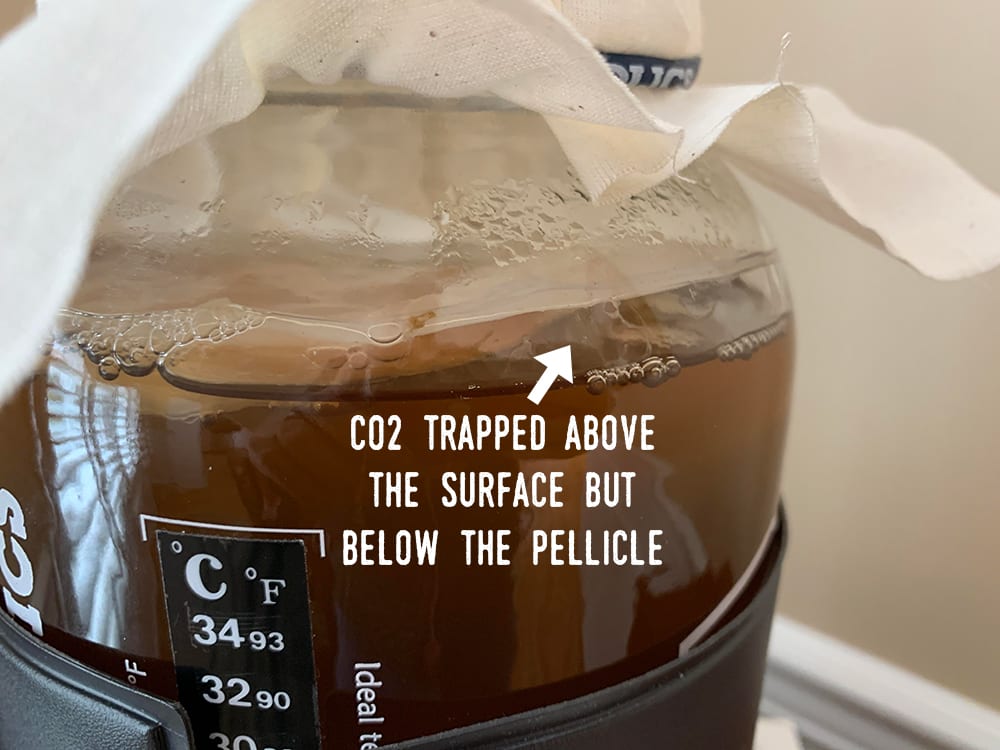
Every once in awhile, we get questions about a SCOBY climbing out of the jar. Since we know that the SCOBY or pellicle isn’t an actual single living being but a colony of living bacteria and yeast, we know it can’t climb up out of the jar and go for a walk. I know, I know, It would be a lot cooler if it did, but unfortunately, this isn’t a thing. Adding to this, which is why we’re writing this post, there is quite a bit of misinformation out there that supports the single living being myth. So with any subject, check your sources folks.

Co2 is the leading cause for a SCOBY (pellicle) to be above the surface, while evaporation can contribute. When the pellicle or SCOBY appears to be climbing out of the kombucha brew, it is co2 trying to escape, not the SCOBY, but is temporarily trapped between the surface of the kombucha liquid and the pellicle. To a smaller degree, evaporation can also play a role over time but more on this later.
Step One
When you start a kombucha brew, the yeast in the SCOBY goes to work first. The yeast eats the sugar and creates CO2 and alcohol. During this primary fermentation, the kombucha brew is covered with a cloth, so during this step, all CO2 created is allowed to escape in the open-air to ferment freely. Meanwhile, the alcohol remains in the liquid.

Step Two
Now that there is alcohol in the brew, the bacteria in your SCOBY will begin consuming it and produce acids. Certain cellulose producing bacteria will start forming the pellicle, which is commonly referred to as simply the SCOBY. All kombucha brews are different, but as the pellicle starts forming and thickening, this creates a barrier so the CO2 created can’t necessarily escape as easily as it once did before this formation. When this occurs, CO2 can be trapped between the liquid surface and the pellicle. These pockets can drastically range in size but usually only hold until the CO2 pressure builds enough to push or force itself through past the pellicle allowing the CO2 to be released.
Related Post: Kombucha Primary Fermentation
For long brew times or slower pellicle growth, the pellicle can adhere or stick to the side of the glass. This can cause a problem over time because as the pellicle sticks in the same position on the glass, the liquid below it begins to evaporate and lower. A few weeks go by, and that part of the pellicle could be entirely out of the liquid. Once out of the liquid, it dries and is no longer protected by the acidity of the kombucha liquid below.
To remedy this, swirl the jar or push the pellicle just below the liquid so that it has a complete layer of liquid covering the surface.
While rare, the majority of mold formation we see grows on the surface of the pellicle, which has dried. Again while uncommon, this is a possibility that can be eliminated by keeping the SCOBY wet with the acidic kombucha brew by merely pushing it down. Also, don’t worry if it sinks; this has nothing to do with the health of your kombucha brew.


Looks like you haven't made a choice yet.